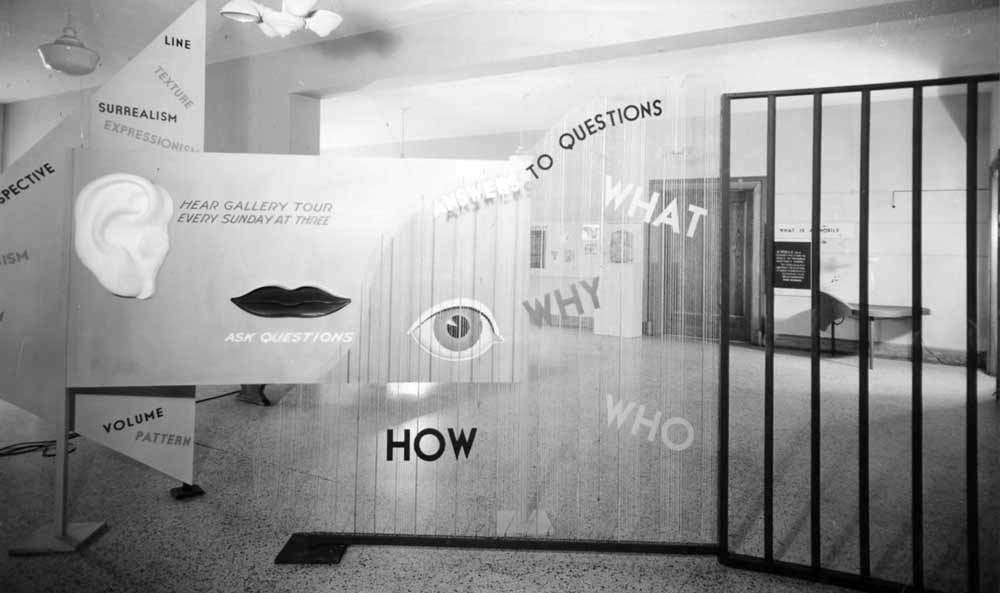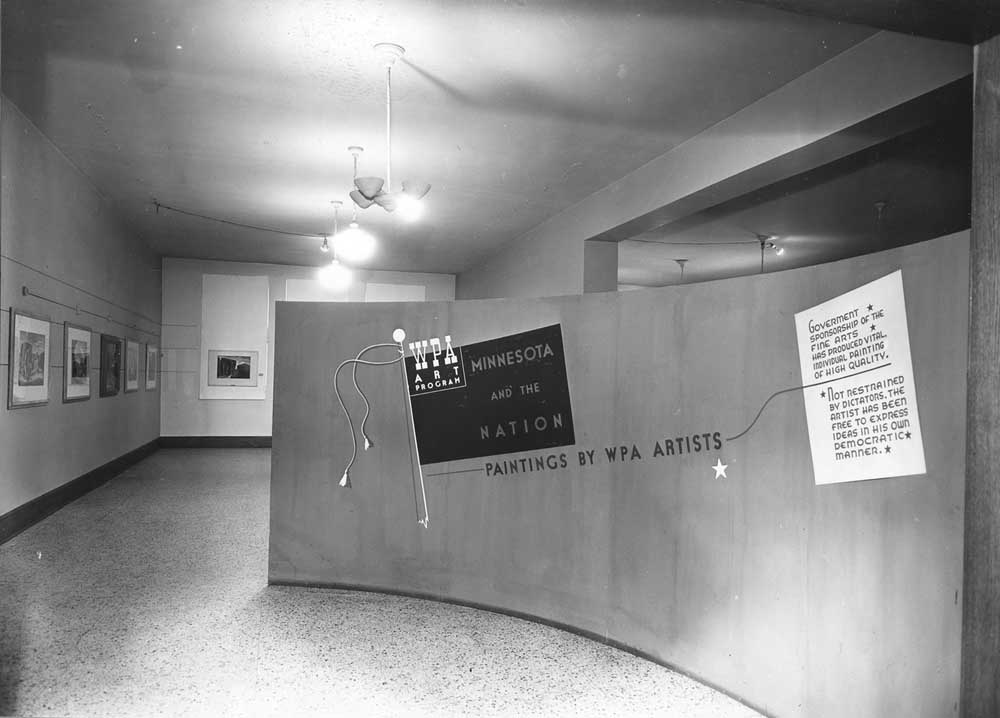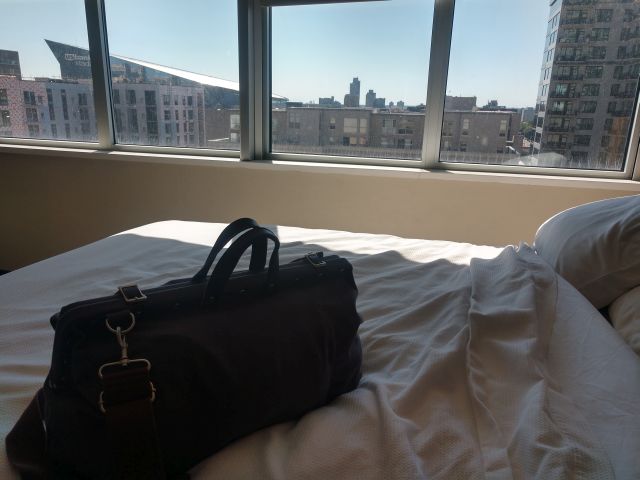Last week I talked about the initial reorganizations I’ve been doing for Chapter 2, and how I’ve been looking to other genres of writing to help me think the text. Today, we’ll pivot back to the research side of things and take a look at the research trip I recently completed at the Walker Art Center in Minneapolis.

I’ve been wanting to visit this site for a while now. Daniel S. Defenbacher, the Walker’s first director, was the Assistant Director of the FAP before he joined the Center, and helped establish the Community Art Center Project. In terms of FAP and art center connections then, the Walker could be considered royalty in a way. The Walker is also regarded as one of the more significant art centers, both for its innovations during the WPA era and for its subsequent life as an innovative contemporary art institution. I was also interested in learning more about how the Walker Art Center transformed itself from a conventional art museum with historical collections to a contemporary art center, and how the FAP did or did not influence that shift. And after reading more about the Roswell Museum’s development and how the FAP viewed it (spoiler, they didn’t think much of it), I thought the Walker would offer an effective foil, an example of an art center ‘golden child’, so to speak.
Conversations to enable this trip have been an ongoing process. I first reached out to the Walker’s wonderful archival staff back in 2019, and was initially thinking of visiting within the next year or two. Then the pandemic began and that obviously didn’t happen. Yet I stayed in touch with the staff, who shared finding aids, transcripts, and other documents to help me get a better sense of what they had. In October 2021, the archives reopened, and we resumed the conversation about an on-site visit. I set about applying for travel funding from both William & Mary and other resources, since I knew this would be expensive. Once I secured sufficient funds to cover my travel, we settled on June.
(As an aside, if you’re wondering why I waited until the summer, it had less to do with my schedule and more with my unwillingness to subject myself to a Minnesota winter. I may have spent my undergraduate years along Lake Michigan in Illinois, but it’s been a long time since I’ve lived in that kind of climate.)

Like my last trip to New York, this was a short research trip, as the price increases in well, everything, limited the time I could spend here. Yet I found that the shortened duration helped me work more efficiently, as I knew my time with the documents was finite. And to be honest, the shorter time probably helped me physically too, as the work of archival research can be exhausting.
In terms of research methods, I took a hybridized approach to what I’ve done at the Met and other art center archives. I was allowed to take as many reference photos as I wanted, but there were simply too many documents for me to just go through and photograph everything, as I’ve done for repositories like the Greenville Art Center. Instead, I took a selective approach, photographing only the ones I considered relevant to the exhibition work happening at the Walker. I’ll be honest, just as it was hard to be selective at the Met, it was difficult to not photograph everything, especially since travel has become so expensive and I have no idea if I’ll ever return here. Feeling that resistance, I couldn’t help but think of Derrida’s discussion of the archiving impulse in Archive Fever, and the constant desire for preserving more than can ever be satisfied. But ultimately, I did exercise choice, and even though I ended up taking about 1,000 pictures, I still thought through each one regarding its potential relevance.


My assessment of the Walker’s history as documented through its archive is still preliminary, but I’ve already learned a lot regarding its institutional history as it transitioned from a conventional museum to a contemporary art center. I’ve found out more about the center’s own extension work, learning that it not only hosted FAP shows, but created its own circulating exhibitions that it then sent out to schools and other locations. I got to see more images of the art center’s exhibition design, and have a better understanding of how crucial innovative design was to its own sense of relevance as a cultural institution. I got a better sense of how the Walker envisioned itself, with Defenbacher describing it as not only a community art center on a bigger scale, but a reimagining of the museum model itself. I also learned more about the frustrations the Walker experienced as a federal art center regarding diminishing WPA funding and the expectation that it would focus on war-related exhibitions rather than art after 1941. I gained a deeper appreciation of the overall precarity of the FAP itself through its duration.
There’s also a lot that I still don’t know. There aren’t any checklists for the extension exhibitions, for example, so what I know about their content comes from brochure descriptions or photographs. Indeed, the whole archive for the early 1940s is inconsistent in terms of preservation, with some shows having multiple folders, and others not having any at all. Some of the questions I have will get clarified as I go through the documents more deeply. Others might remain unknowns, which will shape how I think about the dissertation and the Walker’s place in it as a whole.

But what I have learned so far has been exciting. As far as research trips go, it’s been a productive one that will continue yielding results as I actually go about processing all the data I collected.